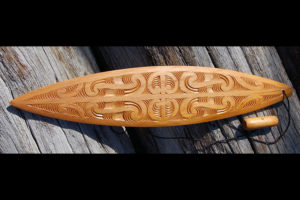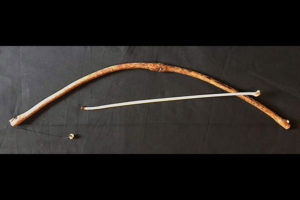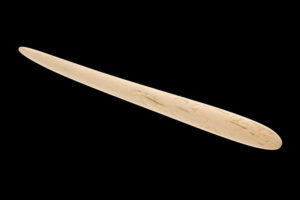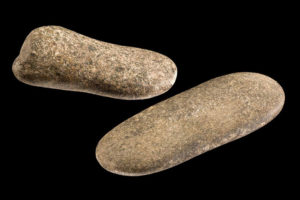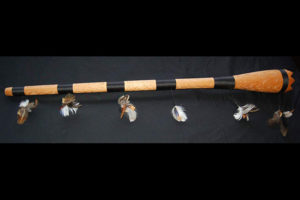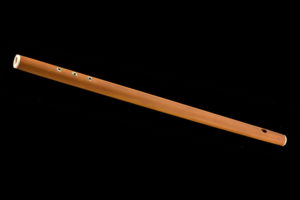
Pūtōrino
1. (noun) large traditional flute – the largest of the traditional flutes, usually made of wood and played as a flute or trumpet and between 30 and 60 cm in length.
The pūtōrino is a flute unique to New Zealand. It is torpedo-shaped (tapering at each end), like the cocoon of the case moth into which Raukatauri changed herself. It has a mouthpiece at one end, and a larger hole in the middle. Played as a cross-blown flute, the pūtōrino has Raukatauri’s voice, but played as a trumpet it has a male voice. A third voice, played through the central opening, is thought to be that of Raukatauri’s mysterious daughter Wheke, who, though she is never seen, is responsible for the inarticulate sounds heard in the forest.
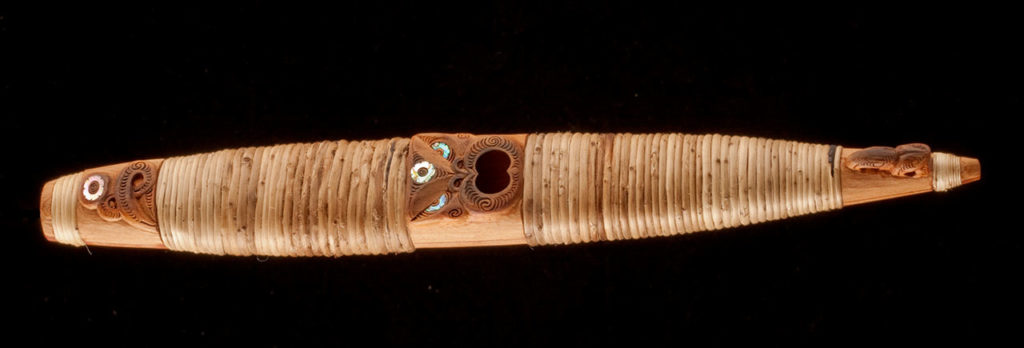
The Pūtōrino is a purely Maori invention, occurring nowhere else in Polynesia or in any other part of the world. It is a wooden trumpet varying in length from 9 to 20 in. and has an uneven bore, swelling out to the centre and diminishing evenly towards the lower end, where the pipe is quite narrow and either completely closed or has a very small opening. The outer shape was carved from a solid piece of wood, split in half lengthwise, hollowed out like two small canoes and then lashed together again with flax cord. At the widest part of the pipe there is an opening shaped like a grotesque mouth. The finest specimens are decorated at both ends with carved figures, and the open mouth is part of a head which is outlined on the flat surface of the pipe. It can be played with bugle technique, with closed lips which are set in vibration by the rapid withdrawal of the tongue. Small variations of pitch can be produced by moving the forefinger over the centre opening. An expert horn or trumpet player can produce scale passages covering two octaves or more but it is unlikely that the Maori explored its full range. A song for a Pūtōrino would be similar in range to a sung chant and would be associated with a particular set of words. The fundamental sound is reedy, penetrating, and alto in quality and pitch. Peter Buck said he was told that it was used as a speaking trumpet, like a megaphone; but, if the legend of Tutanekai and Hinemoa can be accepted as evidence, Tutanekai played a love song on the Pūtōrino which was wafted across the water from Mokoia Island and heard by Hinemoa on the mainland at Rotorua.
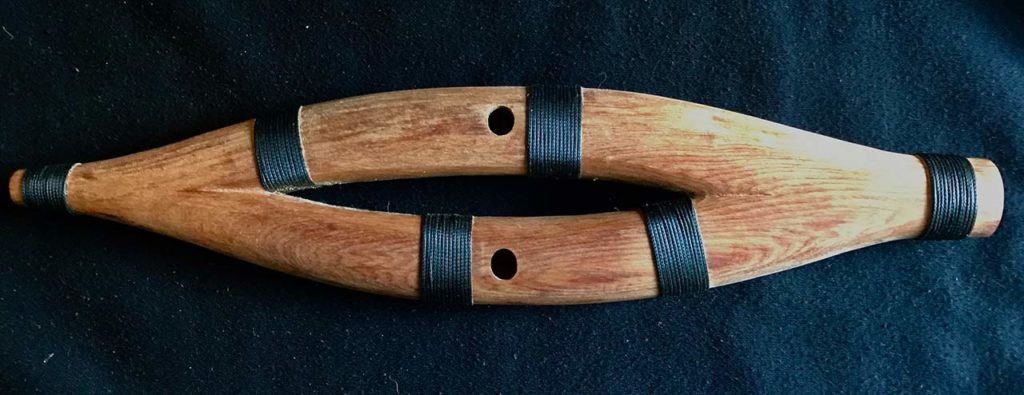
Previous
Next
Pūtōrino
3 Videos

